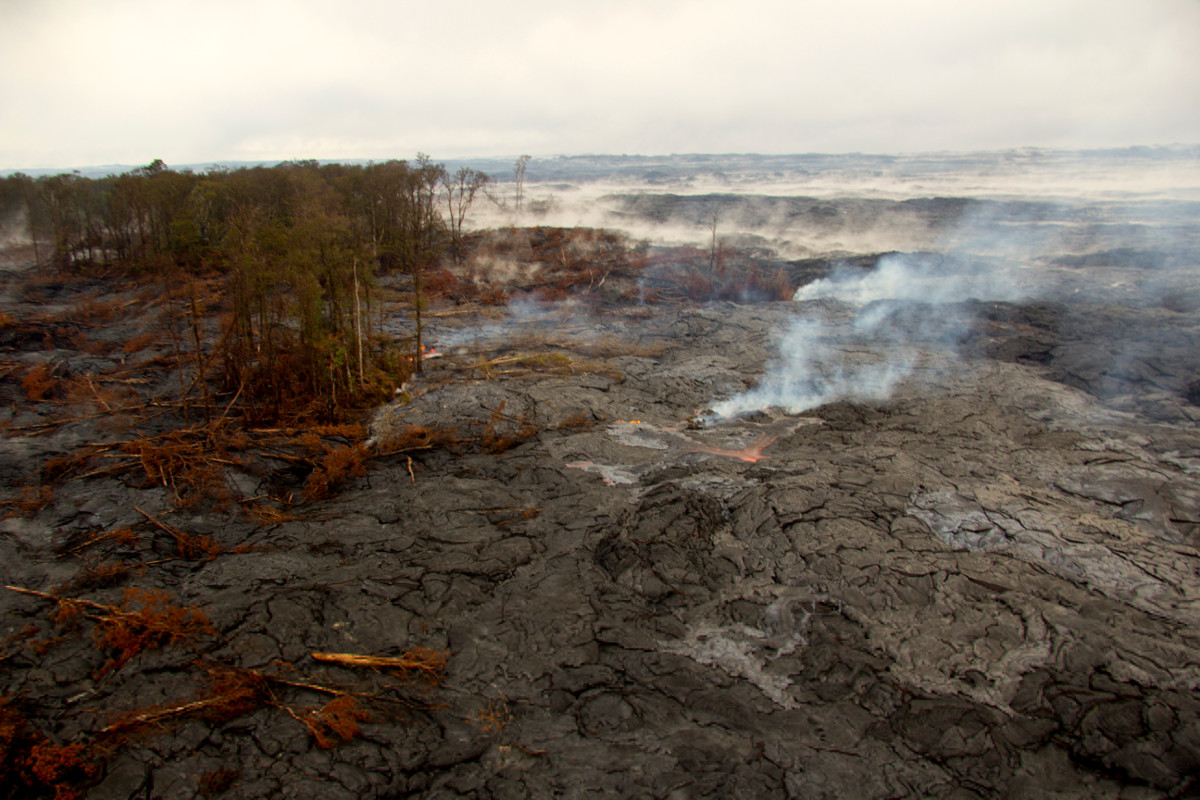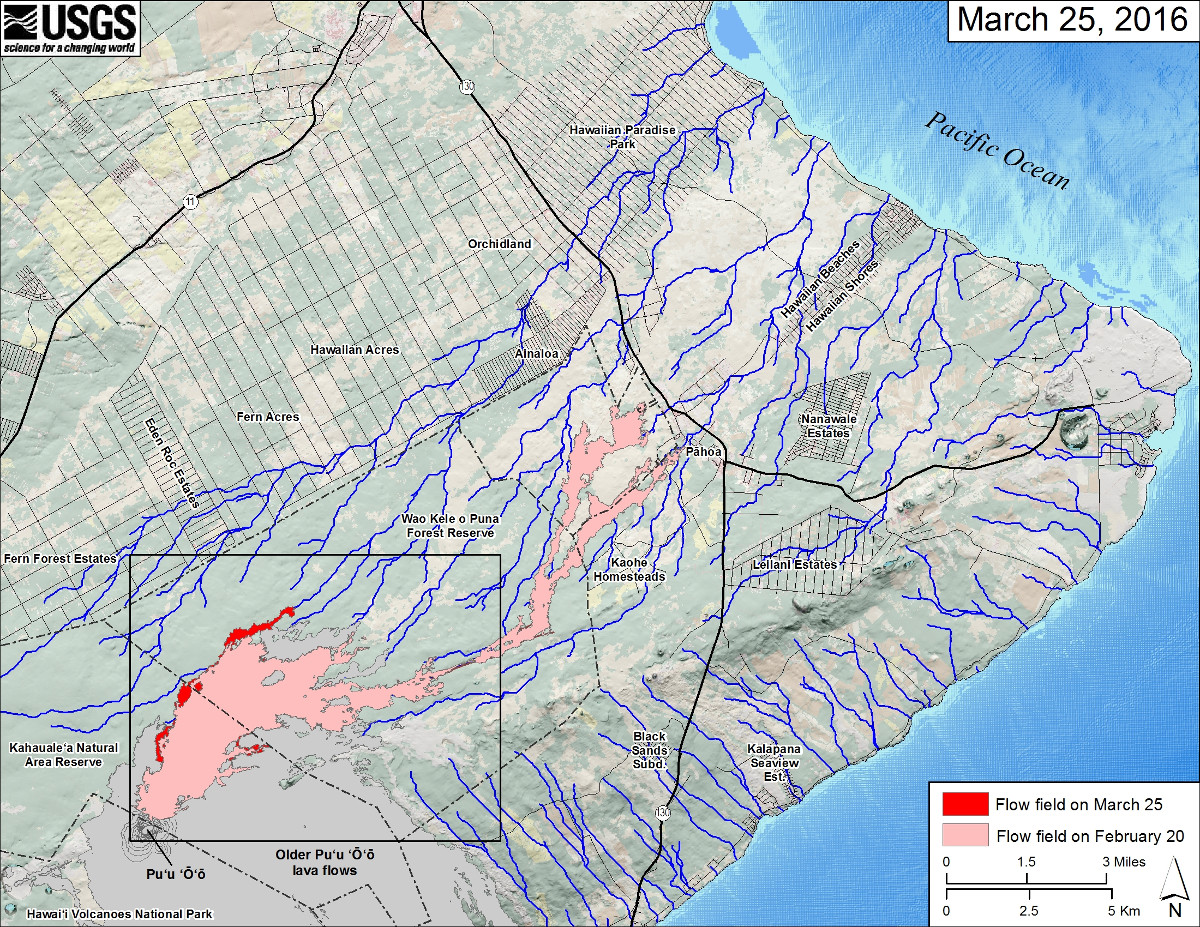HAWAII VOLCANOES NATIONAL PARK – The lava lake at the summit of Kilauea volcano is going up, while the reach of the lava breakouts on the June 27 lava flow field has decreased.
The USGS Hawaiian Volcano Observatory reported on Thursday that the summit lava lake level rose about 82 feet between April 8 and 13. The lava was 108 feet below the floor of Halema`uma`u Crater when measured at noon on Wednesday. Summit tiltmeters continued to record an inflationary trend during the past several days
Last week, the lava lake dropped as summit tiltmeters recorded a larger than usual deflationary trend. The 4-day deflationary period interrupted the longer-term inflationary trend of the summit, similar to previous deflation events, scientists say.
Puʻu ʻŌʻō on the East Rift Zone is also inflating, slightly. “For the past several months, GPS instruments that span Puʻu ʻŌʻō had shown the cone was spreading,” USGS HVO wrote on Wednesday, “which suggests the magma system beneath the vent was pressurizing; last week’s deflationary trend has interrupted this longer term trend.”

(USGS photo) Surface breakouts remain scattered northeast of Puʻu ʻŌʻō.
There has also been a “slight retreat in the reach of active breakouts” on the June 27 lava flow field. On Wednesday, the farthest active lava was 3.5 miles from the vent on Puʻu ʻŌʻō. That’s being compared to an April 3 satellite image that showed the most distal of these breakouts was 4.7 miles from the vent. Scientists observed a very minor expansion of the northern edge of the flow field.
Most of the lava flow activity was observed at the forest boundary, burning trees and creating numerous smoke plumes. Scientists say lava flow currently poses no threat to nearby communities.

USGS MAP: This small-scale map shows Kīlauea’s active East Rift Zone lava flow field in relation to the eastern part of the Island of Hawaiʻi. The area of the flow field on February 20 is shown in pink, while widening and advancement of the flow field as mapped on March 25 is shown in red. Puʻu ʻŌʻō lava flows erupted prior to June 27, 2014, are shown in gray. The black box shows the extent of the accompanying large scale maps. The blue lines show steepest-descent paths calculated from a 1983 digital elevation model (DEM). Steepest-descent path analysis is based on the assumption that the DEM perfectly represents the earth’s surface. DEMs, however, are not perfect, so the blue lines on this map can be used to infer only approximate potential flow paths. The base map is a partly transparent regional land cover map from National Oceanic and Atmospheric Administration (NOAA) Office of Coastal Management draped over a 1983 10-m digital elevation model (DEM). The bathymetry is also from NOAA.

by Big Island Video News8:36 am
on at
STORY SUMMARY
KILAUEA VOLCANO - Following a 4-day long deflationary period at the summit, the lava lake is rising gain with inflation. Meanwhile, the June 27 lava flow shows slight retreat.